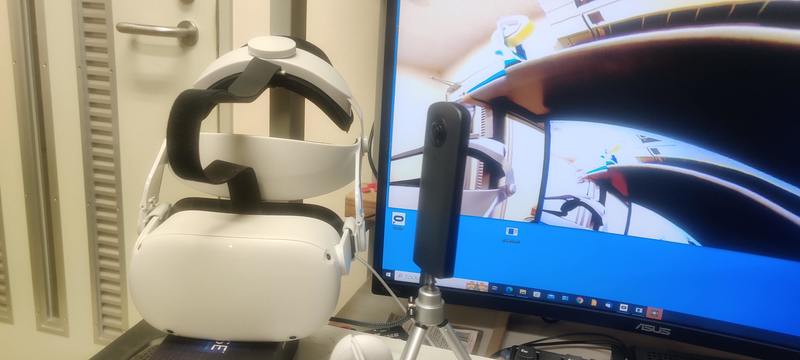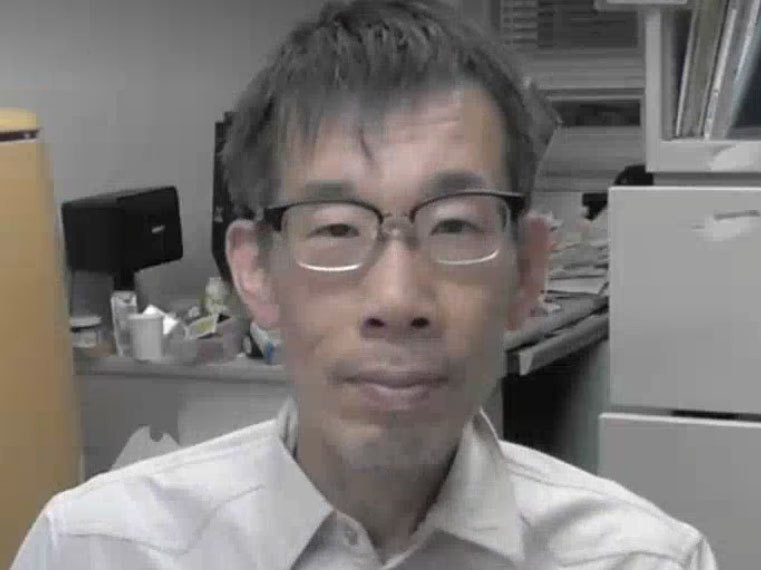Interviews

Experiencing Disabilities Through a Developmental Disorder Mixed Reality System (Part 3)
Eiichi Miyazaki
Hoping to help everyone understand a plethora of disability experiences
Interviewer & Japanese Writer: Yamamoto Takaya; Translation & Editing: Matthew Cherry
Eiichi Miyazaki is still developing his mixed reality (MR) system. The system lets users experience what those with developmental disorders live in their everyday lives.
He’s currently working on an image recognition function, which he was unable to complete during his time in the INNO-vation Program.
“I’m currently looking into AI, for example using a small AI camera in conjunction with a 360-degree camera. This would let the system determine how many people are in the area as well as who is looking at the user. We can then simulate how people with panic disorders feel when there are many people around, or when they feel like people are looking at them,” Miyazaki explained.

The AI camera and VR headset used in Miyazaki’s MR system.
Miyazaki wants more people to experience his MR system. He says he hopes that more people with developmental disorders will try it out in the future.
“Some teachers that have been working with those with developmental disorders have 10 to 20 years of research in the field. And even though they possess vast knowledge about what the visual and auditory sensitivities within developmental disorders are, it’s still something that’s difficult to fully grasp through studies alone. With my MR system, I can surprise people by telling them this is how it really is. I’d love for more teachers to try it out for themselves,” Miyazaki said.
Miyazaki isn’t just limiting himself to researching people with developmental disorders. He’s also interested in simulating the worlds of those with severe & multiple disabilities. People with these kinds of disabilities are said to have an experience much like receiving a shot of anesthesia at the dentist. When local anesthesia is injected into the mouth, it becomes numb. Touching it with your fingers produces no sensation, and drinking water often results in it spilling out.
“People with such disabilities are living with that numb sensation all over their bodies. If I could create a device that replicated this sensation, it would help people more deeply understand how to support them,” Miyazaki shared about the future possibilities of his research.
Although Miyazaki was selected as a challenger of the INNO-vation Program’s Disruptive Challenge, he says that it was only because he applied a second time after not being selected. When asked if he had any advice for people with interesting ideas on research or development, he said that getting the idea out there is what’s important.
“Getting it out there and applying is key. Sure, maybe the people closest to you will let you know if the idea is interesting or meaningless, but at the end of the day, it’s just their opinions. By applying to the INNO-vation Program, you can get completely different kinds of feedback from experts in several different fields. I thought my idea was good when I applied the first time, but the strict feedback I received from the program was incredibly useful for me. Even if you’re not selected, it could end up being the connection to getting selected the next time, so first get your idea out there and apply,” Miyazaki reflected on his time in the program.
Applying and failing, persisting and succeeding. These words of wisdom are exactly what Miyazaki’s MR system helped bring to life.


